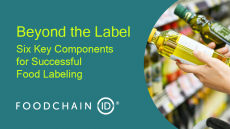Honey compound shows promise as natural antimicrobial

The researchers, led by Professor Randy Worobo of Cornell’s New York State Agricultural Experiment Station in Geneva, NY, tested thousands of bacteria from eight different varieties of honey from the United States and New Zealand. They found that one variety of sunflower honey from South Dakota contained a compound that was effective against a range of Bacillus and Listeria, including Listeria monocytogenes, the bacteria behind the recent cantaloupe outbreak.
They identified the compound as a bacteriocin – a class of antimicrobial peptides produced by bacteria to impede the growth of competing bacteria – produced by a strain of Bacillus thuringiensis(Bt), a common organic pesticide.
"This Bt strain was intriguing, because it had both strong antibacterial and strong antifungal activity," Worobo said. "…Bacteriocins are promising natural food preservatives for the food, livestock and agricultural industries. Because they come from food-grade microorganisms, they are generally regarded as safe."
The researchers called the bacteriocin thurincin H and, after collaborating with University of Alberta chemistry professor John Vederas, they noted that it had several unusual properties.
Vederas said: "After the bacteria make the protein, it undergoes several enzymatic changes that determine the shape and rigidity of the molecule. Thurincin H forms four links between sulfur molecules and particular carbon molecules, which creates hairpins that are twisted into a helical structure. It's actually the first time anyone has described a peptide with four of these linkages."
The researchers said they were exploring these linkages in an effort to discover thurincin H’s mode of action, with the goal of developing it as an alternative to synthetic preservatives.
As part of a general shift towards ‘natural’ foods and ingredients, increasing numbers of consumers are rejecting foods that contain synthetic preservatives. The trend had been led by retailers such as Whole Foods Market, which includes a range of legal preservatives on its list of 'unacceptable ingredients', including BHA, BHT, calcium sorbate, potassium benzoate, potassium sorbate, sodium benzoate and sorbic acid.
However, even as manufacturers have followed suit, with many choosing to cut synthetic preservatives from formulations, food safety remains a top priority, creating challenges for food ingredient firms to provide solutions that meet both natural and food safety criteria.
Source: Angewandte Chemie International Edition
2011, 50, 8718-8721
“The 3D Solution Structure of Thurincin H, a Bacteriocin with Four Sulfur to α-Carbon Crosslinks”
Authors: Clarissa S. Sit, Marco J. van Belkum, Ryan T. McKay, Randy W. Worobo, and John C. Vederas.



















